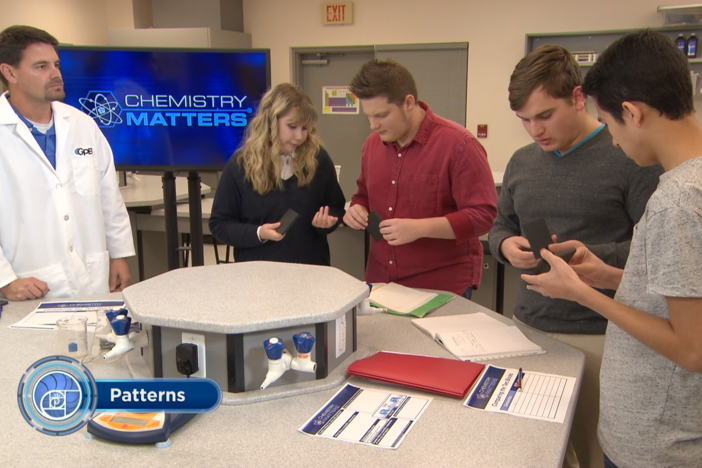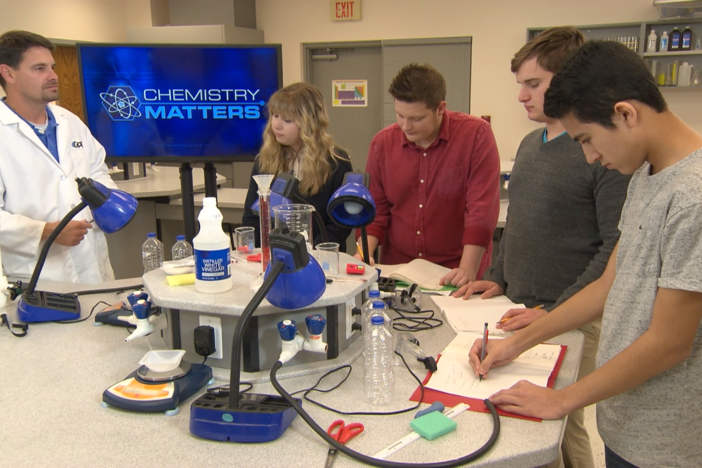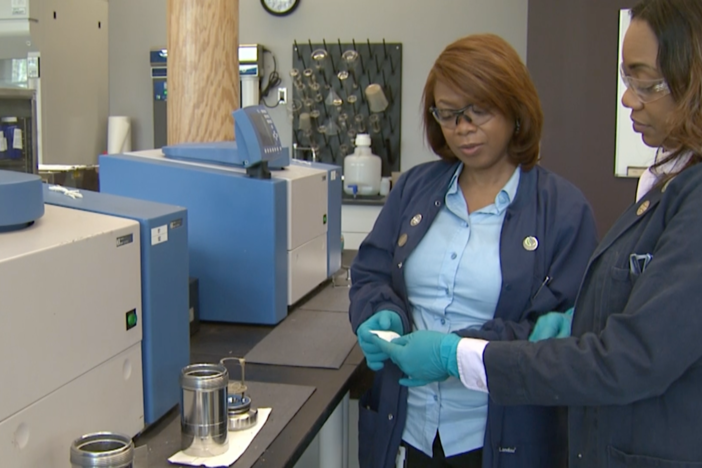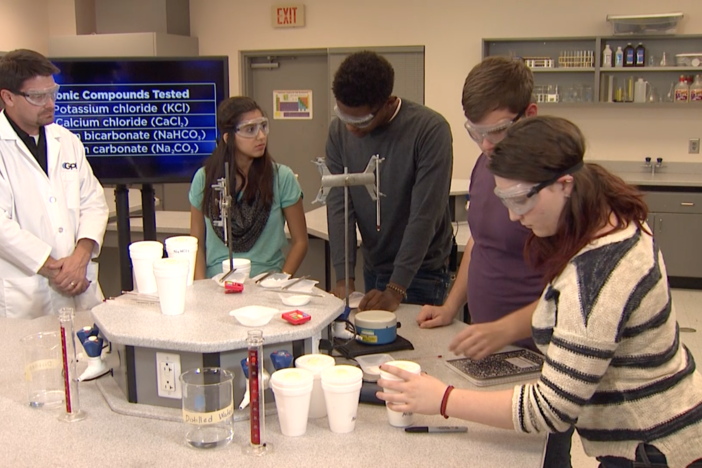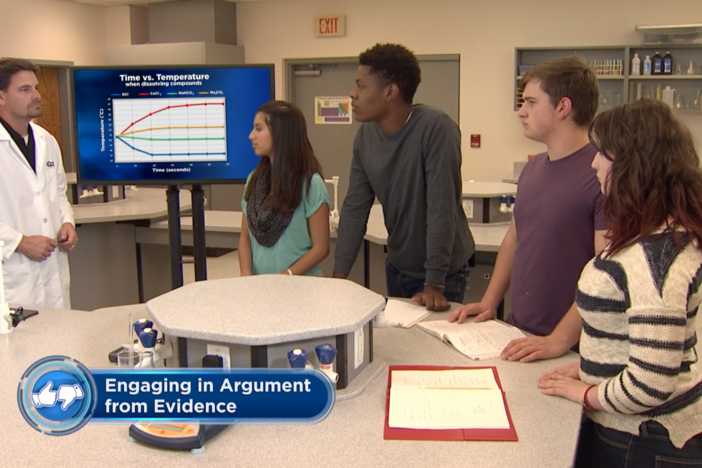Segment C: Heat Transfer
In segment C, students learn about thermal conductivity and specific heat capacity and see if their predictions for how fast the ice cubes melt were correct. Our host explains how heat capacity affects the earth's climate, and the students begin an experiment using samples of greenhouse gases.
Segment C: Heat Transfer
In segment C, students learn about thermal conductivity and specific heat capacity and see if their predictions for how fast the ice cubes melt were correct. Our host explains how heat capacity affects the earth's climate, and the students begin an experiment using samples of greenhouse gases.
Science
Obtain, evaluate, and communicate information about the chemical and physical properties of matter resulting from the ability of atoms to form bonds.
Construct an explanation about the importance of molecular-level structure in the functioning of designed materials.
Develop a model to illustrate the release or absorption of energy (endothermic or exothermic) from a chemical reaction system depends upon the changes in total bond energy.
Obtain, evaluate, and communicate information about how the Law of Conservation of Matter is used to determine chemical composition in compounds and chemical reactions.
Plan and carry out an investigation to determine that a new chemical has been formed by identifying indicators of a chemical reaction (e.g., precipitate formation, gas evolution, color change, water production, and changes in energy to the system).
Obtain, evaluate, and communicate information about the Kinetic Molecular Theory to model atomic and molecular motion in chemical and physical processes.
Plan and carry out an investigation to calculate the amount of heat absorbed or released by chemical or physical processes.
Obtain, evaluate, and communicate information to explain transformations and flow of energy within a system.
Plan and carry out investigations to describe how molecular motion relates to thermal energy changes in terms of conduction, convection, and radiation.
Analyze and interpret specific heat data to justify the selection of a material for a practical application (e.g., insulators and cooking vessels).
Analyze and interpret data to explain the flow of energy during phase changes using heating/cooling curves.
Obtain, evaluate, and communicate information about the law of conservation of energy to develop arguments that energy can transform from one form to another within a system.
Plan and carry out investigations on the effects of heat transfer on molecular motion as it relates to the collision of atoms (conduction), through space (radiation), or in currents in a liquid or a gas (convection).
absolute zero - the temperature at which all molecular motion stops and entropy is zero.
calorimetry - a method of measuring the quantity of heat transferred in a process.
chemical thermodynamics - the study of energy changes that accompany chemical reactions or physical changes in the state of matter; also known as thermochemistry.
endothermic - describes a process that takes in or absorbs energy from its surroundings.
enthalpy - a thermodynamic quantity equivalent to the total heat content of a system.
entropy - the measurement of energy dispersal.
exothermic - describes a process that produces or gives off energy to its surroundings.
first law of thermondynamics - the amount of energy in the universe is a constant. Energy can be transferred from one substance to another or transformed into other forms of energy, but it cannot be created or destroyed.
heat - the transfer of energy from a warmer object to a cooler object; also known as thermal energy.
joule - the SI unit of measure for energy, abbreviated J.
second law of thermodynamics - energy always disperses from a more usable form of energy to a less usable form.
specific heat capacity - the heat needed to raise the temperature of one gram of a substance by one degree Celcius.
surroundings - everything around the system, i.e. air, water, packaging, etc...
system - the chemical reaction or physical process being monitored.
temperature - a measurement of the average kinetic energy or molecular movement in an object or system.
thermal conductivity - a measure of the ability of a material to transfer heat.
third law of thermodynamics - the entropy of a system at absolute zero is zero.
The Chemistry Matters teacher toolkit provides instructions and answer keys for labs, experiments, and assignments for all 12 units of study. GPB offers the teacher toolkit at no cost to Georgia educators. Complete and submit this form to request the teacher toolkit. You only need to submit this form one time to get materials for all 12 units of study.

